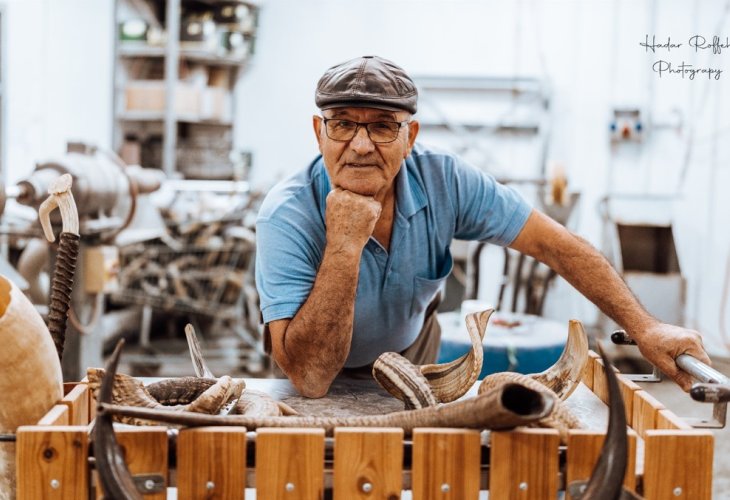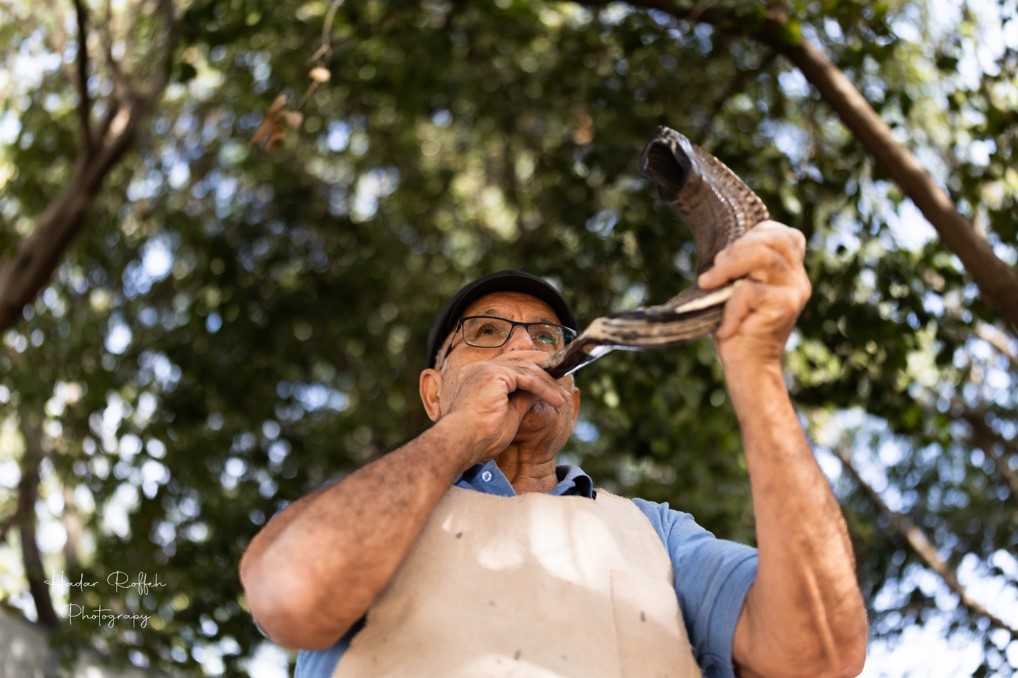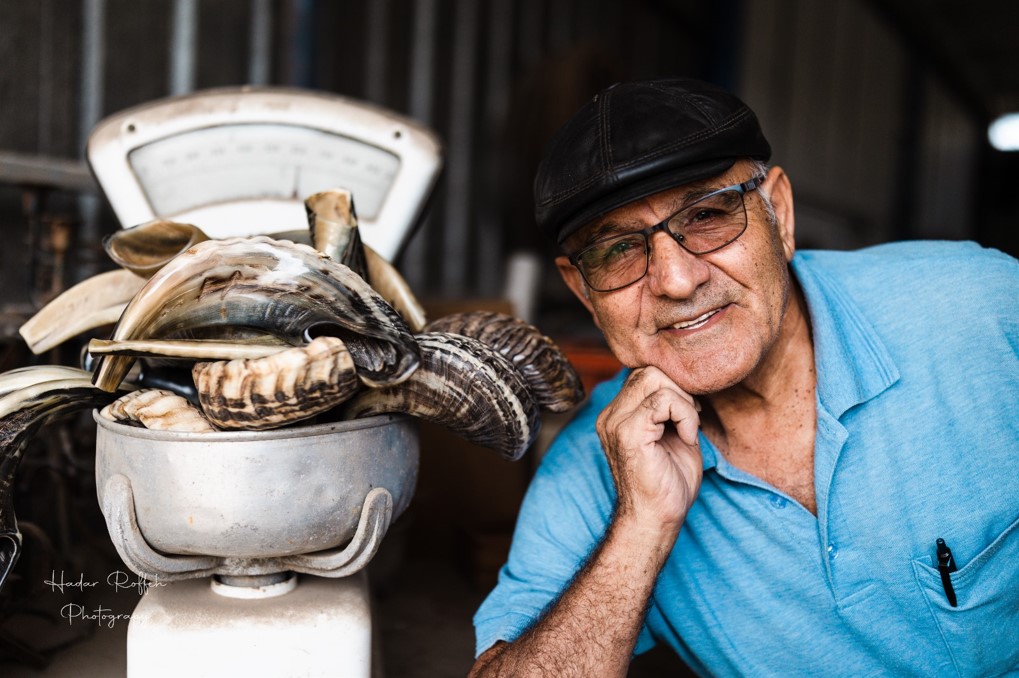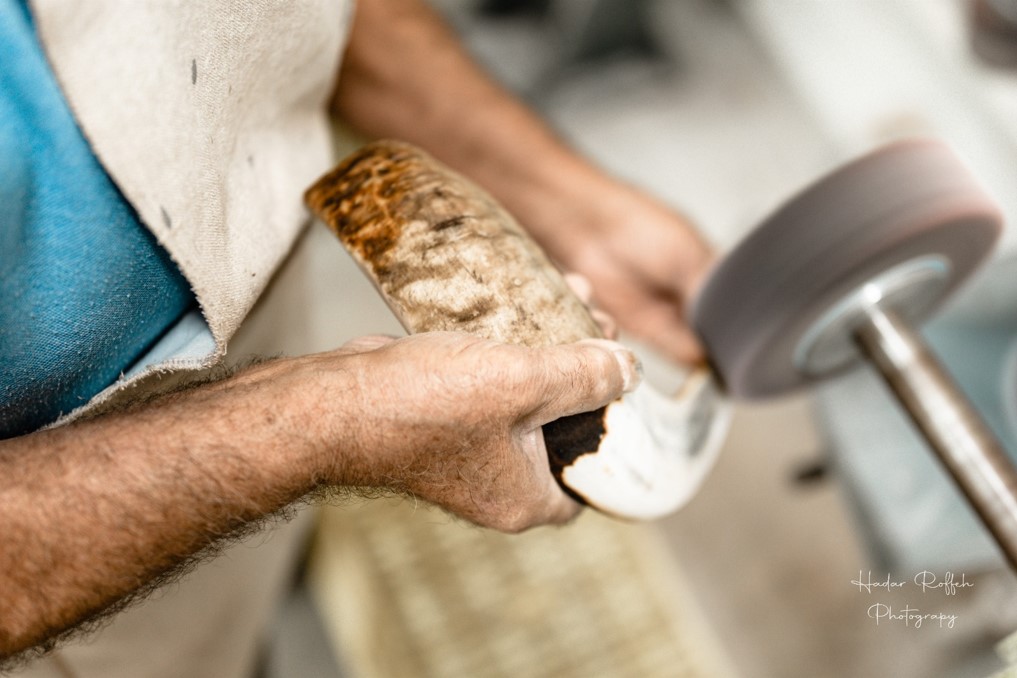Rosh Hashanah
From Metalworker to Master Shofar Maker: The Remarkable Journey of Shimon Keinan
Inside the Golan Heights workshop where every shofar is handmade, spiritually crafted, and infused with decades of devotion
 Photo: Hadar Rofe
Photo: Hadar RofeAt any hour of the day, if you arrive at Shimon Keinan’s shofar workshop in the Golan Heights, you will find him with a shofar in his hand. Sometimes he is blowing it, sometimes polishing it, and sometimes producing a new one. Even while we speak with him, he continues working. Every so often he pauses the conversation, blows a powerful blast, and makes sure the shofar performs exactly as it should.
“I was born with a shofar in my hand,” Shimon tells us with a smile. “For as long as I can remember, I’ve felt a rare connection to shofarot. By age ten I already knew how to blow a shofar well. The problem was — I didn’t have a shofar, and I didn’t have the money to buy one. So I made one myself out of a pipe and a kerosene funnel, and that’s what I used.
At eighteen, I became the official ba’al toke’a of the synagogue. After my army service, I served as the shofar blower in two synagogues — one Sephardi and one Ashkenazi, for eight years. That’s how I learned what the customs are in each place and how the blowing is traditionally done. Later, I created my first real shofar.
It happened when we slaughtered a sheep on the moshav. While everyone else sat down to eat, I asked for the horn. My father explained how shofarot were made in Morocco, and I began the work with great excitement, trying to imitate the steps. The result, thank God, came out beautifully — and from then on, shofar-making became a part of me.”
From a Metal Factory to a Shofar-Making Workshop
Shimon is the sort of person who always does what he believes is right for him. That’s how, as a young man, he went to vocational school and later established a metalworks factory that built chicken coops and cowsheds across the southern Golan. But at age 54, he once again felt an inexplicable pull toward the world of shofarot.
“I closed the metal business and opened a shofar business,” he says. “It was an act of incredible courage, because the factory I closed was very successful, and I knew almost nothing about the shofar industry — not where to source materials, not how the global market worked. But I am a craftsman in every fiber of my being, and I believed I would succeed, with God’s help.”
His first mission was to search for horns — a far more difficult task than he expected, since Israel has no horn producers at all.
“Eventually I partnered with a Muslim merchant from Turkey and flew to Istanbul, where I bought my first horns,” he recalls. “What helped me a lot was my fluent Arabic — thanks to my Moroccan background, Arabic is my childhood language. Later, I flew to Morocco to purchase materials there as well. Back then, there were no direct flights between Israel and Morocco, so I had to pass through airports all over the world.
I don’t speak English and I can’t read the language either, but God accompanied me everywhere — guiding and protecting me. Today I know many countries around the world solely because of shofarot.”
But horns are only part of the craft. “There are no ‘shofar-making machines’ in Israel,” he explains, “so I built everything with my own hands. Nothing was simple. I made many mistakes along the way. But everything comes from above — I don’t say that lightly. I constantly felt Divine guidance helping me in everything I did. Whenever something got stuck, I lifted my eyes upward and said: ‘Master of the Universe, I am doing my part — please step in and help me.’ And He always did.”
 Photo: Hadar Rofe
Photo: Hadar RofeWhat is the greatest challenge in producing shofarot?
Shimon surprises us: “The work itself is very complex and full of difficulties, but the hardest part actually comes before the work begins. Importing horns is a problem because the state creates huge bureaucratic obstacles and doesn’t easily approve the imports. It requires endless paperwork and frustration.
“And of course, making the shofar is extremely delicate. One moment of inattention and the shofar is invalid.”
Does that happen to you sometimes?
“When people ask me that, I answer with a question: ‘Does your wife never burn food?’ Even a professional chef occasionally ruins a dish — and the same goes for shofarot. Mistakes happen, and sometimes they invalidate the entire horn. If it’s a small horn, it’s still disappointing but manageable. But when it’s a large, unique horn you worked hard to acquire and paid a lot of money for — it’s painful. Over the years I’ve learned to accept it. I truly feel everything comes from Heaven, and I don’t complain.
“Of course, there’s also the meticulous work needed to ensure the shofar meets halachic and kashrut standards. Our workshop is certified by the Badatz of the Eida Chareidit, which requires tremendous effort and attention. I believe the mouthpiece of the shofar is its soul. When I work on it, I try to think only holy thoughts and avoid idle conversation. The external appearance is important too — hiddur mitzvah matters, and the shofar should look beautiful.”
 Photo: Hadar Rofe
Photo: Hadar RofeA Shofar for Everyone
The customers who come to Shimon’s workshop are incredibly diverse — people from every background, from Israel and abroad.
“There are stores and large institutions purchasing shofarot, religious councils that want a shofar for every synagogue, and private individuals. The market is full of shofarot — but the biggest problem is that many sellers import shofarot from China and Morocco. The price may be low, but the kashrut is extremely questionable, and many of these shofarot are outright invalid.
I see them being sold in major retail chains, at holy sites, and in tourist areas. People buy them thinking they got a great deal, without realizing they’re blowing an invalid shofar and not fulfilling the mitzvah.”
 Photo: Hadar Rofe
Photo: Hadar RofeHow can people recognize fake or invalid shofarot?
“It’s very hard to detect with an untrained eye, which is why the sellers are so successful. The only solution is to buy from a Judaica shop or a trustworthy, God-fearing seller.
It’s like being offered a luxury suit worth 1,000 shekels for only 180 — you immediately know something is wrong. I say this from painful experience: many people bring me their shofarot for inspection, and I’ve had to tell them to throw them away.”
How many shofarot have you made over the years?
“I produce around 2,000 shofarot a year. Each one is handcrafted for hours and completely unique — I customize each shofar to the customer. People come with different mouth shapes or jaw structures, and I tailor the instrument to suit them.
“Recently, a ba’al toke’a came to me whose lower lip had been paralyzed in an accident. He desperately wanted to continue blowing the shofar. I crafted a shofar specifically for his condition. He took it with tears in his eyes and told me the only thing that had troubled him since the accident was the fear that he wouldn’t be able to blow the shofar on Rosh Hashanah.
“That warmed my heart deeply. I spend hours on each shofar — but seeing a customer walk out smiling makes it all worthwhile.”

